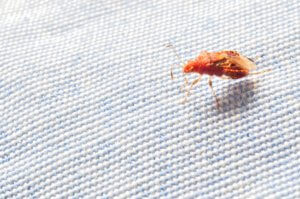 If the past few years have proven anything, it’s that sanitation and cleanliness measures are now being taken more seriously than ever. If patients, employees, or visitors see just one ant, cockroach, fly, or silverfish, red flags will be raised, and reputations could be damaged.
If the past few years have proven anything, it’s that sanitation and cleanliness measures are now being taken more seriously than ever. If patients, employees, or visitors see just one ant, cockroach, fly, or silverfish, red flags will be raised, and reputations could be damaged.
Hospitals and other healthcare facilities see a lot of people coming and going throughout the day. And with those people and their belongings comes the risk of a variety of pests. Whether pests travel in with patients, visitors, and staff, or if they scurry through the constantly opening and closing doors, their presence needs to be taken care of immediately to maintain a healthy environment. Below are some high-traffic areas that are especially susceptible to pest pressures in healthcare facilities:
Waiting Rooms
 Bed bugs multiply quickly, and in just six months, a few can turn into a full-on infestation of 13,000 or more. Detection is critical to breaking the bed bug life cycle before they become a problem. Bed bugs can live and hide in numerous locations. You may think they are limited to beds, but they aren’t that choosey. Other areas of your facility can be at risk if there are any of the following: upholstered furniture, cushions, draperies, clothing, furniture, electrical outlets, and any other soft material.
Bed bugs multiply quickly, and in just six months, a few can turn into a full-on infestation of 13,000 or more. Detection is critical to breaking the bed bug life cycle before they become a problem. Bed bugs can live and hide in numerous locations. You may think they are limited to beds, but they aren’t that choosey. Other areas of your facility can be at risk if there are any of the following: upholstered furniture, cushions, draperies, clothing, furniture, electrical outlets, and any other soft material.
Getting rid of bed bugs and their eggs requires quite a bit of cooperation from employees. Take a proactive approach by having your janitorial staff inspect the cracks and crevices of upholstered surfaces for signs of bed bugs, such as the bugs themselves which are flat and small in size, their fecal stains, and exoskeletons.
Loading Docks
You may not think of loading docks as high-traffic areas, but they see plenty of action during delivery hours. Cockroaches love to create homes inside of dark cardboard boxes and can easily pick up and transfer harmful bacteria to patients – making it crucial to monitor all incoming supply deliveries.
Large pallets tend to attract various types of rodents as well and should be left outside until they are inspected and cleared to enter. Because every season is “peak” season for rodents, all staff should be on alert and look for their signs including droppings, rub marks on walls, and burrows.
Restrooms
Typically, bathrooms in healthcare facilities do not provide the same privacy as in a home – patients and visitors are in and out all day long. The constant usage of water and trash cans for all types of waste, including food, provides the three necessities that pests need to survive: food, water, and shelter. Without proper pest management, silverfish, rodents, cockroaches, ants, and other pests may find their way inside restrooms and hitchhike their way into the rest of your healthcare facility.
Cafeterias, Food Carts, and Nurses Stations
Flies love to eat sugar, which is why they are attracted to high-traffic areas where food is stored and served. Cafeterias, food carts, and even food brought in by visitors, patients, or staff can quickly turn into feeding and breeding grounds for flies. Unfortunately, flies can transmit food-borne illnesses to whatever food they land on, including the nourishment served to patients and visitors.
It’s imperative to keep your eyes open for not just flies, but also the signs of them. Inform your staff to report small, dark clusters of spots (the size of a pinhead) and maggots (which are flies in their larvae stage).
Pests can negatively impact the perception of sanitation at any healthcare facility. And even the cleanest of places can become the host to a variety of pests in high-traffic areas. If you’re looking to protect your healthcare facility from pests, Western is here to help. Our free quote provides insight into overlooked pest pressures. We’ll then create a customized plan that ensures you, your team, and your patients stay healthy, safe, and satisfied.